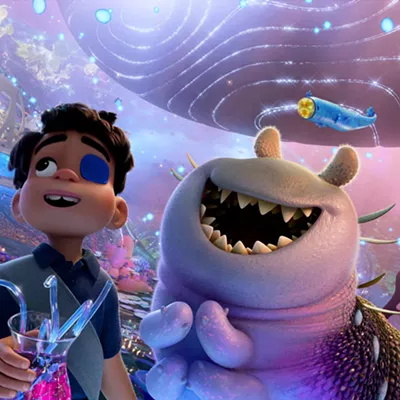The last time so many famous monsters got together was in 1948's Abbott & Costello Meet Frankenstein, a silly, but memorable horror-comedy. Variations of some of the same fiends appear here -- the Frankenstein monster, Count Dracula, the Wolfman -- but this time someone is coming after them: Gabriel Van Helsing. If that name sounds familiar it's because he's the same fellow who's been hunting down vampires ever since his first appearance in Bram Stoker's novel Dracula (although here his name has been changed from Abraham to Gabriel).
A stellar group of actors have played him in the past, from Anthony Hopkins and Laurence Olivier to Mel Brooks and Peter Cushing. But this time he gets the Hugh Jackman treatment. He's presented as a rugged adventurer, a no-nonsense bounty hunter who, because of the nature of his work -- killing monsters who often look like people -- is "the most wanted man in Europe." He's got pretty good cover, though, since he's paid by the Vatican to do "God's work" by stamping out evil.
Thank goodness the film isn't nearly as serious as it sounds so far. In fact, at first it's hard to tell if the stunning black and white beginning -- Dr. Frankenstein is creating life at his lab, and the villagers are headed his way with torches -- is a send-up. It's more a loving homage. But shortly after the first major twists to the familiar tale -- involving Count Dracula teaming up with Frankenstein's monster and a wild segment of Transylvania under siege by Dracula's flying brides -- the film really does loosen up.
It's one year later, the film has switched to color and to Paris, and the rakish Van Helsing is doing battle with the notorious Mr. Hyde (looking a little too Hulk-ish for the film's good). There's some excellent action, along with a dollop of one-liners, and by the time Vatican honchos are telling Van Helsing that he's to go to Transylvania to do something about Dracula, it's clear that this film is not going to make any apologies for overdoing the visual effects. Instead, it revels in them.
The dark film's light side is enhanced with the introduction of the friar Carl (David Wenham, who played Faramir in The Lord of the Rings), who is to tag along to Transylvania and is this film's answer to James Bond's Q -- a weapons expert who wields some of the choicest dialogue. Once there, Carl and Van Helsing meet up with the fearless and voluptuous Anna Valerious (Kate Beckinsale), who is ready to take on Dracula herself, in retaliation for his destroying of her family. She says she doesn't need Van Helsing's help, until there's a sudden air attack by Dracula's vicious brides. It's a good thing Q, I mean Carl, has outfitted Van Helsing with a rapid-fire crossbow.
From there, some would say the film goes out of control, especially in the area of effects overkill. But while there are a few too many flying bride attacks without enough variation, this really is a load of fun, with a great big helping of unrelenting action and some well-placed humor.
Beckinsale's Anna is full of spunk, has a great unruly mop of hair and dresses to kill. Jackman's Van Helsing is comparatively calm and collected -- but also wary, as there are monsters everywhere. His hair, too, is a big mop, and he dresses stylishly in leather. Both leads are excellent, partly because they give such gung-ho, intensely physical performances. But there's far more solid acting from the always unrecognizable Richard Roxburgh (Moulin Rouge!, Children of the Revolution) as Dracula. He plays the aging count as cool, hip and elegantly evil, yet world-weary, tired of the curse upon him. And he sure knows how to walk up a wall.
The plot gets a little too convoluted when Anna's brother is bitten by a werewolf and when it's subsequently hinted that Dracula might have a werewolf cure. Things get even more ludicrous when it's revealed that Dracula and Van Helsing have some history.
But the craftsmanship of the film keeps shining through, making plot problems and the like seem insignificant. Cameras fly around with some of the airborne characters, there's a lavish, gloriously gaudy production design to Dracula's masquerade ball, and a coach ride through the Transylvanian countryside provides a major highlight. It's in scenes such as the ride that the computer experts just go bonkers in giving the film its extraordinary detail. (Look closely at the thundering computer-generated coach, and you can see that the curtains are fluttering perfectly in the wind.)
The film ends on a surprising but ultimately satisfying note. And if it does well, there will most likely be a sequel. After all, there are plenty of monsters out there.













